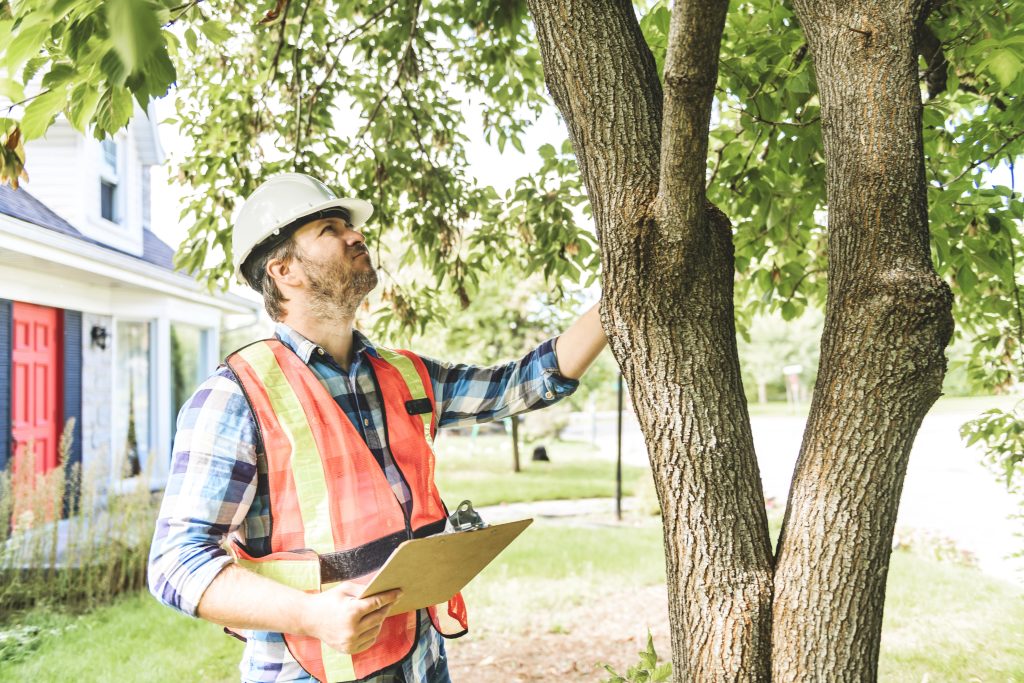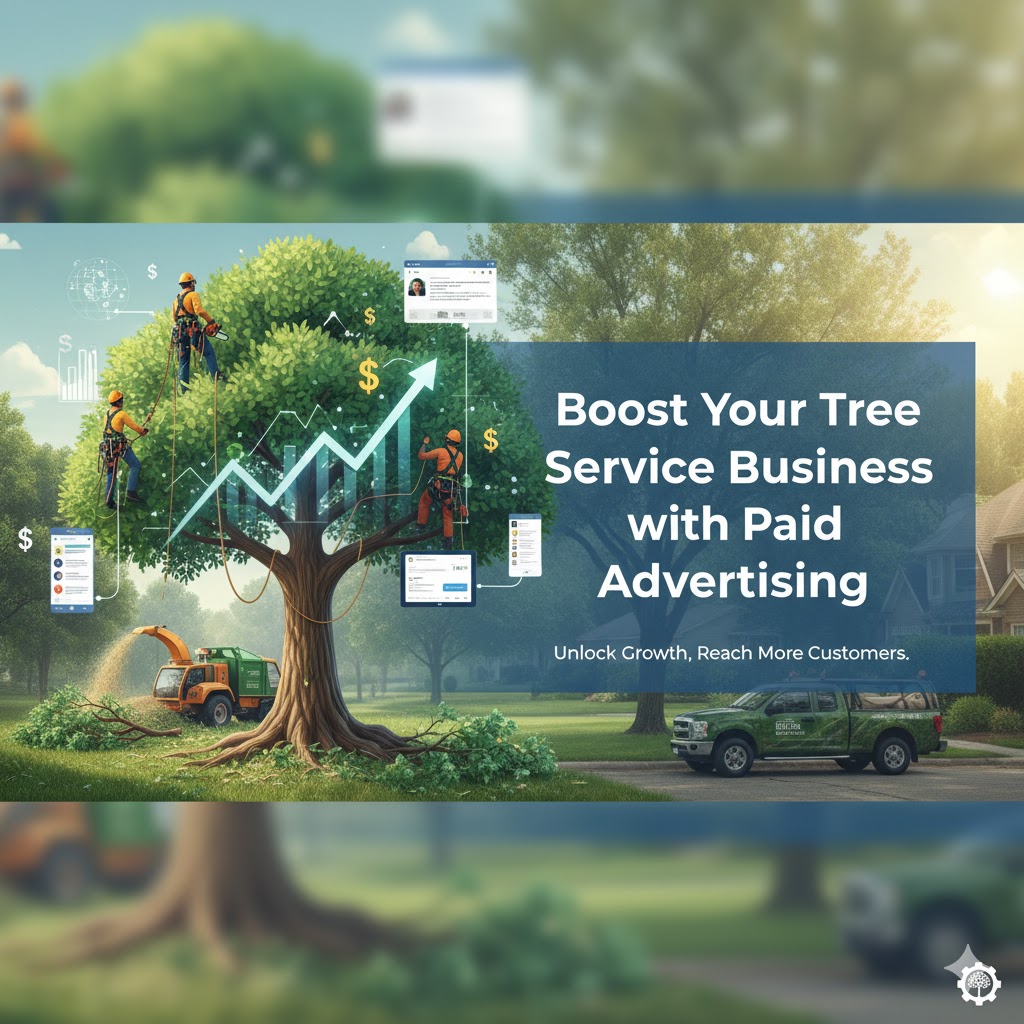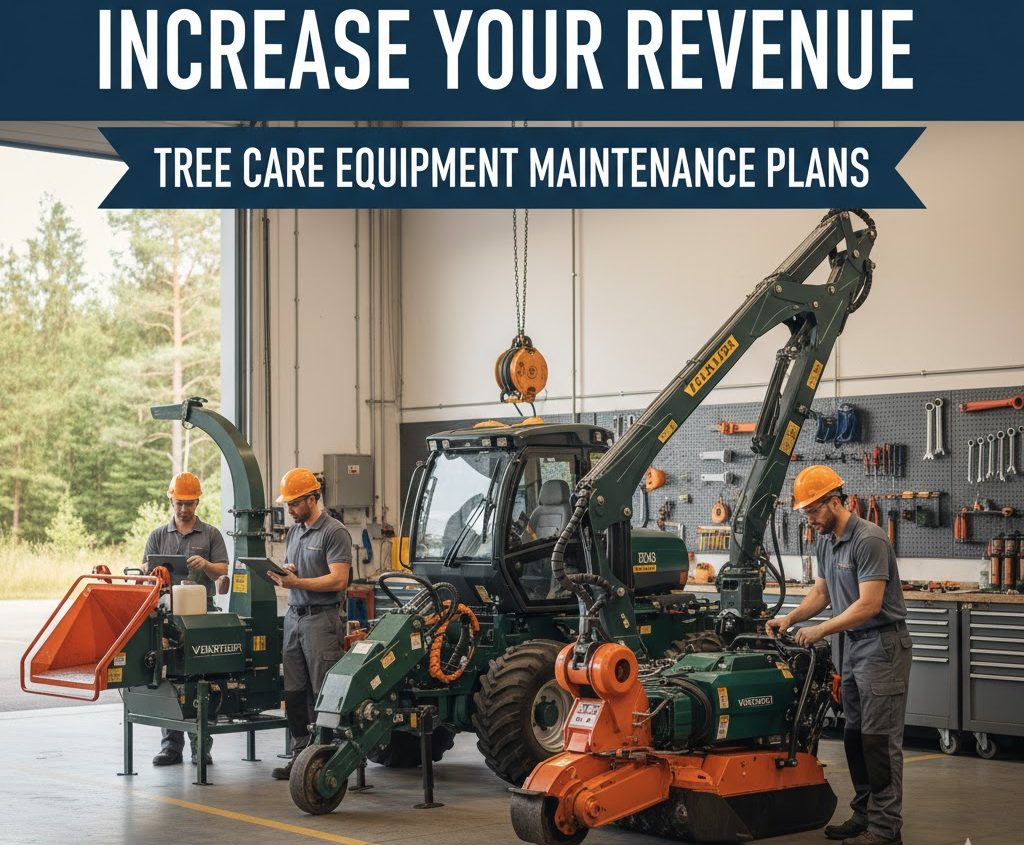You’ve probably felt it. That up-and-down cycle of the tree care business. One month you’re swamped with storm cleanup calls, the next, the phone is eerily quiet. It’s a cash flow rollercoaster that can make growing your business feel impossible.
But what if you could get off that ride? What if you could build a steady, predictable stream of income month after month? This is where strategic tree care maintenance plans come in. They aren’t just another service to offer; they are a fundamental shift in your business model.
Instead of waiting for a customer’s tree to have a problem, you’re proactively managing its health. You move from being a reactive emergency service to a trusted, long-term partner. With a consistent tree care plan, you create a foundation for real, sustainable growth.
Got questions? We have answers. Schedule a short call with TreeCareHQ here.
What Exactly Are Tree Care Maintenance Plans?
- What Exactly Are Tree Care Maintenance Plans?
- The Real Business Reason: Predictable, Steady Income
- More Than Money: Building a Loyal Customer Base
- Smart Ways to Structure Your Maintenance Plans
- How to Market and Sell Your Plans
- Best Practices for Running a Smooth Operation
- Conclusion
What Exactly Are Tree Care Maintenance Plans?
Let’s break it down to its simplest form. A tree care maintenance plan is an agreement between you and your client for ongoing, scheduled tree care. It’s a proactive strategy instead of a reactive one. You’re not just fixing problems; you’re preventing them from happening in the first place.
This approach gives clients peace of mind. They know their valuable trees are being looked after by a professional. And for you, it means consistent work you can plan your entire operation around.
Key Parts of a Good Plan
A solid tree plan isn’t just a once-a-year visit. It’s a comprehensive strategy with several moving parts. Here’s what a great care plan typically includes.
Regular inspections are the bedrock of any maintenance program. A certified arborist will schedule visits to assess the health and condition of the trees. This lets you spot early signs of disease, pests, or structural issues before they turn into costly emergencies.

During an inspection, we look for anything from slowed growth and broken branches to signs of a nutrient deficiency. We check the tree trunk for damage and the overall tree canopy for health. Early detection is vital for the long-term vitality of established trees.
Next comes scheduled pruning and trimming. This isn’t just about making a tree look pretty. Proper maintenance pruning promotes healthy growth, improves airflow to reduce disease risk, and maintains structural integrity through structural pruning.
Learning when to prune each species is part of a professional’s expertise. Removing dead branches improves safety and the tree’s appearance. The right tree pruning can guide a young tree’s growth and prevent future problems.
Pest and disease management is another critical component of a service tree plan. You’re actively monitoring for potential threats like Emerald Ash Borer or oak wilt. Early detection and treatment can save a tree that would otherwise be lost and require a full tree removal.
A good pest management strategy is integrated into the plan. This may involve preventative treatments or swift action when an issue is identified. Keeping trees healthy is the best defense against pests and disease.
Don’t forget what’s underground. Your tree maintenance plan should cover fertilization and soil health. Healthy soil is the foundation for a healthy tree, so making sure trees get the right nutrients is a big deal.
This could involve a soil test to identify specific needs. Based on the results, you might apply fertilizer or amend the soil with organic matter. Proper soil moisture and good drainage, especially in fast-draining soils, are also monitored.
Finally, your plan can include priority emergency services. When a storm does hit, your maintenance plan clients go to the top of the list. They will appreciate this priority status, which builds incredible loyalty and peace of mind.
The Real Business Reason: Predictable, Steady Income
The biggest benefit for your business is right here. Implementing tree care maintenance plans creates a predictable revenue stream. This transforms how you manage your finances and your entire business.
You move away from relying on sporadic, high-ticket jobs to having a baseline of recurring income. This stability allows for much better long-term planning. You can finally make decisions based on a reliable forecast, not a guess.
Escaping the Cash Flow Rollercoaster
Think about how recurring billing cycles can change your business. Whether it’s monthly, quarterly, or bi-annually, you have money coming in on a set schedule. This predictable cash flow smooths out the financial highs and lows that plague so many contractors.
When you know how much money is coming in each month, you can budget with confidence. Need to finance a new chipper or hire another crew member? A history of steady, recurring revenue makes getting a business loan much easier.
This consistency reduces the financial stress of running a business. You’re not constantly worrying about where the next job will come from. You have a solid base of work already lined up to schedule tree services for.
More Than Money: Building a Loyal Customer Base
Steady income is amazing, but the long-term win from maintenance plans is customer retention. These plans foster deep, lasting relationships with your clients. You become their go-to expert for anything related to their landscape.
Each scheduled visit is a chance to connect with your customer. You’re not just showing up for a one-time job and then disappearing. You’re a familiar, trusted face they see throughout the year, from tree planting in the spring to fall preparations.
Creating Raving Fans, Not Just Customers
These regular interactions build a powerful level of trust. Clients see your commitment to their property firsthand. This makes them far less likely to shop around for a cheaper price from a competitor.
With a structured plan, your clients see tangible results over time. Their newly planted trees thrive and you can reduce transplant shock. Their property value increases, and they avoid major problems that could lead to costly tree damage.
You shift the relationship from a simple transaction to a partnership. You are their trusted advisor, invested in the long-term health and beauty of their property. That’s a connection that one-off jobs can never create for tree owners.
Smart Ways to Structure Your Maintenance Plans
A one-size-fits-all approach rarely works. The best tree care maintenance plans are designed to meet specific client needs. Offering a few different options can help you capture a wider range of customers.

You can package your services in different ways to appeal to different types of property owners. The idea is to be flexible while still building a program that is efficient for you to run. Start simple and expand your offerings as you gain experience.
Residential vs. Commercial Plans
The needs of a homeowner are very different from those of a commercial property manager overseeing facilities management. Your plans should reflect this. A residential plan might focus more on aesthetics, fruit tree care, and the overall health of newly planted trees.
For newly planted trees, a good plan includes monitoring the root ball and soil moisture to reduce transplant. We teach clients that a proper mulch ring, a few inches deep, helps retain moisture and suppress weeds. The mulch should never touch the trunk area to avoid rot.
A commercial plan, on the other hand, needs to prioritize risk assessment and safety, especially for a large campus tree population. Property managers are very concerned about liability. As noted by the Tree Care Industry Association, things like clearance for pedestrian walkways, parking lot visibility, and preventing falling limbs are top priorities.
These plans for managing an urban forest on a corporate or college campus often involve working with an advisory committee. This group might include a faculty representative or even a student representative. The goal is providing guidance that aligns with the campus community’s values.
Seasonal vs. Annual Contracts
Not everyone is ready to commit to a full year of service right away. Offering seasonal plans can be a great entry point. You could offer a spring package focused on fertilization and early pest detection, or a fall package for pruning and storm preparation.
The ultimate goal, however, is to move clients to an annual contract. An annual plan gives them comprehensive, year-round care for their planted trees and gives you predictable, year-round revenue. Frame it as the best way for them to protect their investment and receive proper care.
How to Market and Sell Your Plans
Having great service packages is only half the battle. You have to effectively market and sell them. This means getting the right message in front of the right people at the right time.
Start by talking to your existing happy customers. They already know and trust your work. They are the easiest ones to convert to a maintenance plan. Explain the long-term benefits and how it can actually save them money by preventing major issues.
Know Who You’re Talking To
Clearly identify your target markets. Homeowners in affluent neighborhoods who take pride in their landscape are a great target. So are property managers for office parks, apartment complexes, and HOAs who need to maintain their grounds on a predictable budget.
Tailor your marketing message to each group. For homeowners, talk about beauty, health, and how to plant trees for long-term success. For commercial clients and their members grounds committees, talk about safety, liability, and budget certainty.
Getting the Word Out
Use your website and social media to showcase your expertise. Post before-and-after photos of properties you maintain. This provides powerful social proof that your programs work to keep an urban forest healthy.
Create informative content. Write a blog post about the best time to prune oak trees in your area or how to identify transplant shock in a young service tree. Film a short video explaining the signs of a common local pest, referencing information from your state’s department of natural resources.
Don’t overlook the power of networking. Build relationships with local businesses that serve the same clients, like landscapers, irrigation specialists, and real estate agents. They can be a fantastic source of referrals for people looking to plant tree specimens or care for existing ones.
Best Practices for Running a Smooth Operation
Selling the plans is just the start. Delivering consistent, high-quality service is what keeps clients happy and renewing their contracts year after year. This requires solid systems on the back end.
You need to be organized and efficient. Dropping the ball on a scheduled visit or missing a critical treatment can damage the trust you’ve worked so hard to build. Great execution is what sets successful programs apart.
Systemize Your Schedule

You absolutely cannot manage a maintenance program from a notebook or a spreadsheet for long. You need a dedicated scheduling system. This helps get every client the right service at the right time, every time.
A good system allows you to optimize routes, manage crew assignments, and track service history. It brings a level of professionalism that builds client confidence and makes your life much easier. You’ll know exactly when each property needs its day tree care.
Your Team is Your Greatest Asset
Invest in training your team. They need excellent technical skills, including tree climbing safety, but they also need good customer service skills. Your crew is the face of your company, and their professionalism on-site makes a huge difference.
Empower them to spot opportunities. Train them to identify potential issues and communicate them to the client or to you. They can be your eyes and ears on every property, conducting an informal tree damage assessment after a windy day.
Use Technology to Your Advantage
Modern CRM (Customer Relationship Management) software for field service businesses is a game-changer. It can handle scheduling, billing, client communication, and service history all in one place. It streamlines your entire operation.
This software gives you instant access to all the information you need about a client. It helps you look professional and stay organized. The investment pays for itself quickly through improved efficiency and customer retention.
Always Be Improving
Finally, never stop learning and adapting. Regularly ask your clients for feedback. What do they like about your service? What could you do better?
Stay on top of industry trends by following organizations like the International Society of Arboriculture or publications on urban forestry. The US Forest Service tree guides can also be a great resource. Continually adapting your tree care maintenance plans means you’re always giving the best service possible.
Conclusion
Building a truly successful tree care business is about more than just being good at climbing and cutting. It’s about building a stable, profitable company that can stand the test of time. Shifting your focus from reactive calls to remove tree damage to proactive tree care maintenance plans is one of the most powerful strategic moves you can make.
They provide the predictable revenue you need to escape the cash flow rollercoaster. They foster incredible customer loyalty, which leads to more referrals and less time chasing new leads. When a tree removed is the last resort rather than a common service, you know your plans are working.
By implementing a solid care plan structure, you’re not just creating steady income. You’re building a better, more sustainable business for the long haul. You become a partner in stewarding the green assets of your community.
Ready to take your tree business to the next level? Schedule a short call with TreeCareHQ here.





